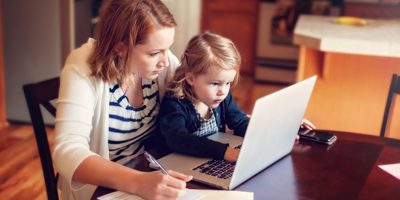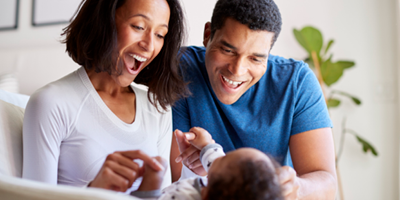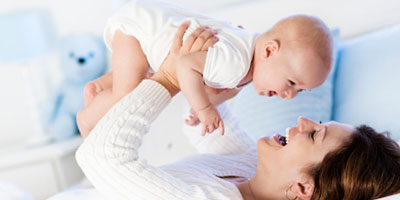There is a wealth of (often conflicting) information on the internet about what baby items are safe to buy second hand. Emotions run high when tiny babies are involved and people often have strong opinions on practically every aspect of parenting - including what shouldn't be purchased used. The fact is, baby supplies can be expensive and buying second hand baby items could be a true boon to your family budget. Here's a short list of items for baby that are generally considered safe to buy second hand.
Outerwear, clothes, & shoes
Babies quickly outgrow all of those adorable onesies and color-coordinated outfits that they were gifted at your baby shower, so as you might suspect, the world is full of gently used baby clothes. (Fun fact: baby shoes stay especially well preserved, because babies don't wear them out.) Clean, secondhand baby clothes, outerwear, and shoes are all generally safe for your baby, just be wary of items with drawstrings, loose buttons, or other choking hazards. Give any clothing item you buy second hand a thorough inspection.
Select baby furniture items and equipment
Outfitting your nursery with secondhand furniture and baby equipment can save you a bundle. Gliders and changing stations are plentiful on the second-hand market. While nursery furniture that's primarily used by adults is generally safe to purchase second hand (dresser, diaper pail, rocking chair, etc.), most experts agree that you should purchase your crib and mattress new. Safety regulations for cribs have changed a lot over the last decade, so it's definitely in your baby's best interest to pay full retail and buy new. Doctors also recommend buying baby a firm mattress to decrease the risk of Sudden Infant Death Syndrome, so it's best to avoid used crib mattresses, which tend to become much softer after extended use. Other used furniture items to be wary about are high chairs, playpens, and walkers.
Strollers
Some parenting websites will insist that strollers should be purchased new, but you might be able to snag a bargain on some of the more desirable stroller models if you buy used. If you want to buy a stroller secondhand, make sure it hasn't been the subject of a recall in the last several years by running the make and model number through recalls.gov. A rash of stroller recalls in 2013 forced the U.S. Consumer Protection Safety Commission to set federal safety standards for strollers the following year, so strollers that were manufactured in the last few years are probably your best bet.
Select toys
Toys are another item that appear on both “DO BUY SECONDHAND” and “DON'T BUY SECONDHAND” lists. Clean, plastic toys can be generally safe to reuse, just avoid anything painted to minimize your baby's possible exposure to lead paint, and watch out for small parts and pieces that are choking hazards. If you're not sure whether a toy is appropriate for your child's age group, do your research or put it back. Be sure to always give used toys a good scrub and sanitize them before giving to your baby.
Before you devote a portion of your family budget to any sizable second hand purchase, be sure to run the product info through www.recalls.gov, and watch out for recalls of items you may have purchased recently on the US Consumer Product Safety Commission's Recalls page. If you need help learning, or you'd like to learn more about budgeting for baby, be sure to consult the Protective Learning Center.
WEB.1987.06.16




